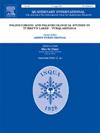Late Pleistocene correlations in glaciated Russia
Abstract
This is a critical review of disputable chronostratigraphic results in the Upper Pleistocene of glaciated Russia including the West Siberian and Russian Plains. The main goal is to assess the validity of stratigraphic tools used for long-distance correlation of young sedimentary formations. The test is performed by comparison of i) Russian stratigraphic schemes of two last glacial cycles against the West European ones and ii) the traditional stratigraphic scales of Russia against the new chronological results brought up by modern dating tools. The multitude of AMS radiocarbon, optical luminescence, uranium series and electron-spin resonance dates obtained by international research projects allowed to reconsider the age of the main stratigraphic markers of Siberia which proved to be by one glacial cycle older than suggested by the traditional correlation schemes. The correlation wisdom in central European Russia for the time being cannot be satisfactorily revised using the statistical approach because of the limited supply of chronometric data. The palaeoenvironments inferred from palynological data in central European Russia are in discrepancy with the presumably coeval periglacial landscapes of Western and Central Europe. This divergence implies that the traditional chronostratigraphic correlation of the older Middle Valdaian interstadials with their Pleniglacial counterparts of MIS 3 stage is probably erroneous. The correlation errors mainly stem from the age underestimation by conventional radiocarbon dates used as chronological links of the Russian Pleistocene formations.

 求助内容:
求助内容: 应助结果提醒方式:
应助结果提醒方式:


